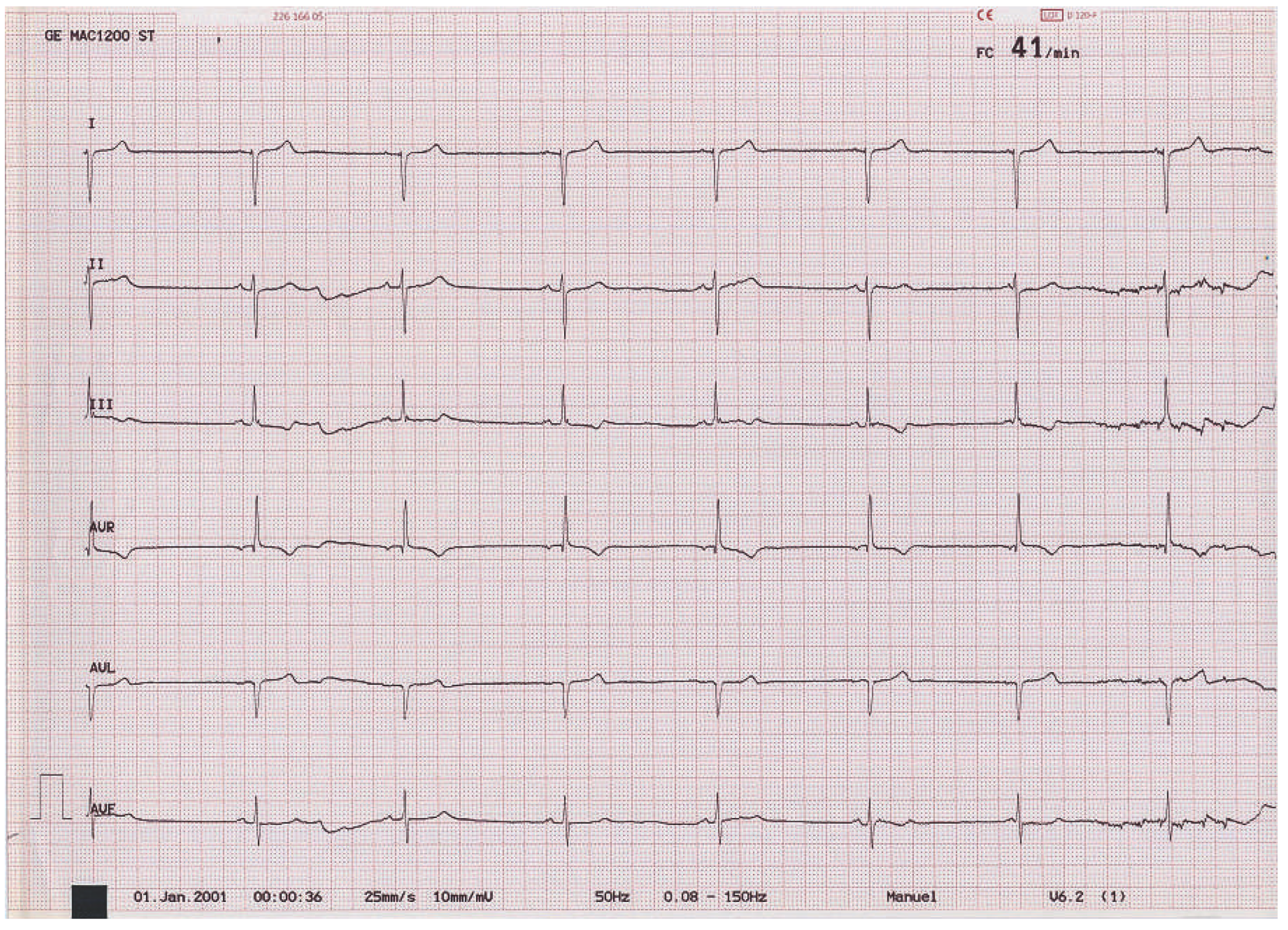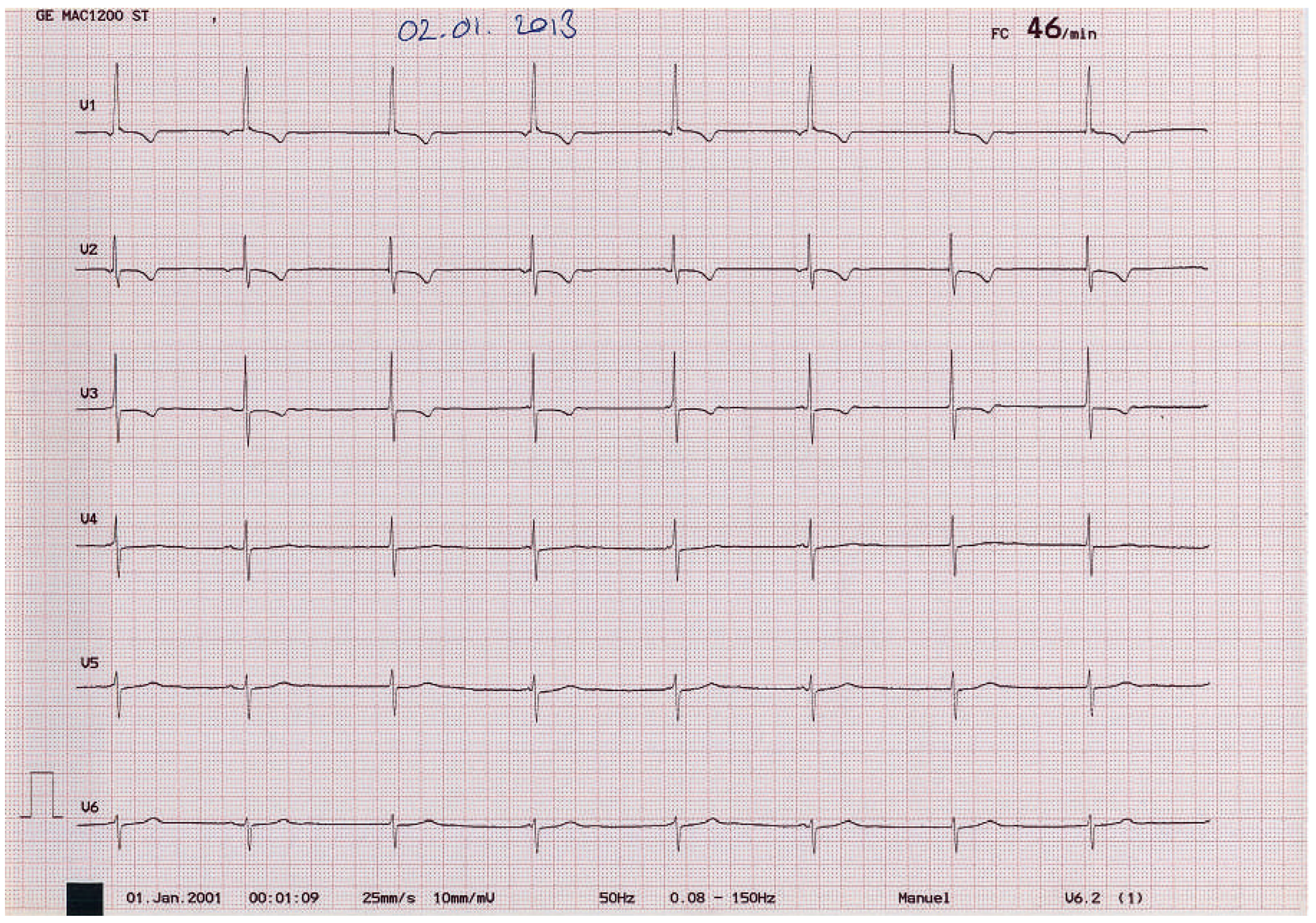When Abnormal is Normal
1. Case History
2. Questions
- Whatisnormal/abnormalonthe12-leadECGwhentakingintoaccountthecongenitalheartdisease?
- Doesjunctionalrhythmwarrantfurtherinvestigations/interventions?
3. Commentary
Funding
Conflicts of Interest
References
- Warnes, C.A. Transposition of the great arteries. Circulation 2006, 114, 2699–2709. [Google Scholar] [CrossRef] [PubMed]
- Khairy, P.; Marelli, A.J. Clinical use of electrocardiography in adults with congenital heart disease. Circulation 2007, 116, 2734–2746. [Google Scholar] [CrossRef] [PubMed]
- Gelatt, M.; Hamilton, R.M.; McCrindle, B.W.Q.; Conelly, M.; Davis, A.; Harris, L.; et al. Arrhythmia and mortality after the Mustard procedure: A 30 year single-center experience. J. Am. Coll. Cardiol. 1997, 29, 194–201. [Google Scholar] [CrossRef] [PubMed]


© 2013 by the author. Attribution - Non-Commercial - NoDerivatives 4.0.
Share and Cite
Bouchardy, J. When Abnormal is Normal. Cardiovasc. Med. 2013, 16, 189. https://doi.org/10.4414/cvm.2013.00166
Bouchardy J. When Abnormal is Normal. Cardiovascular Medicine. 2013; 16(6):189. https://doi.org/10.4414/cvm.2013.00166
Chicago/Turabian StyleBouchardy, Judith. 2013. "When Abnormal is Normal" Cardiovascular Medicine 16, no. 6: 189. https://doi.org/10.4414/cvm.2013.00166
APA StyleBouchardy, J. (2013). When Abnormal is Normal. Cardiovascular Medicine, 16(6), 189. https://doi.org/10.4414/cvm.2013.00166



